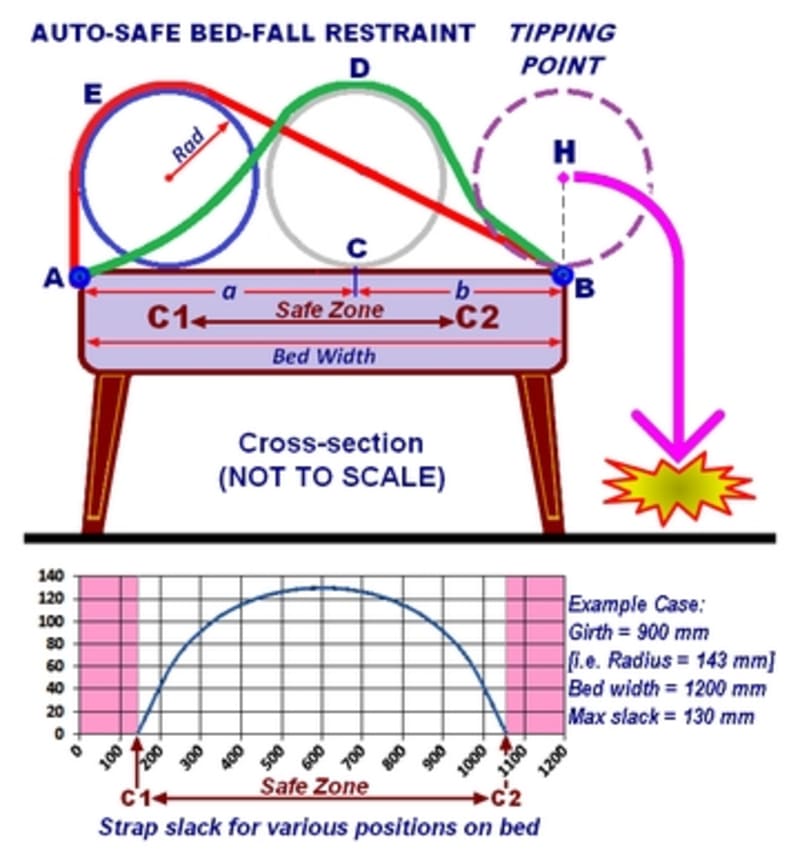Many people fall out of beds. Although the height of fall is less than 1½ ft. (½ m), resulting injury could be high to fatal because the person who falls from bed is generally unaware he (= she) is going to fall and hence unable to use any instinctive or planned tactic to minimize damage.
Particularly among older people and in hospitals, protecting persons from accidental falls is a serious problem. Various physical restraints like side bars and body straps have their own inconveniences such as need for high-tech and human assistance in the former and restriction of freedom of movement in the latter.
Proposed method involves two straps (over or attached to a blanket) with two pairs of clips to be clamped at the two long edges of bed, as at A, A', B, and B' in top figure. FG is an optional strap to avoid exposing the feet.
Proposed method offers complete freedom of movement on bed during rest or sleep. The restraint comes into operation only when the user rolls over to either side of bed, and prevents him from falling over the edge of bed.
The principle here is to determine the appropriate length of strap (= width of blanket) for each user of the bed.
As marked in middle figure, the tipping point occurs when the centroid H of the person is vertically above the edge of the bed, B. As we do not wish to risk being too close to this situation, we will limit the movement of the person to a 'Safe Zone' (C1-C2) so that no part of him will overhang the edges A and B.
For calculations, user's cross-section has been idealized as a circle to cover all possible orientations of body. Radius of this imaginary circle is computed from the girth (around the hips or waist. Charts may be made available for various girths and bed-widths, although individual adjustment is easily learnt.
When the strap length has been adjusted to calculated safe length AEB, user can confidently go to sleep without the least fear that he will roll over the edge while he sleeps.
The principal difference between proposed method and existing 'four-point' restraints preventing both hands and both feet from all movement, is that in this method, the user will not feel the restraint at all until he rolls to the edge of bed. He may assume his preferred (or habitual) comfortable position, as long as he is not close to bed edge. The slack will vary nearly as much as the radius, as indicated in bottom figure.
Other advantages are:
• It is inexpensive, 'natural', and easily adjustable.
• User can use his own blanket under the straps.
• If user is capable of managing his own sleeping arrangements, he can adjust the straps without having to seek others' help, avoiding embarrassment.
• When product reaches commercialization stage, quick-release buckles may be incorporated for users to get out of the straps instantaneously.
Like this entry?
-
About the Entrant
- Name:Natarajan Krishnamurthy
- Type of entry:individual
- Software used for this entry:MS-EXCEL
- Patent status:none





